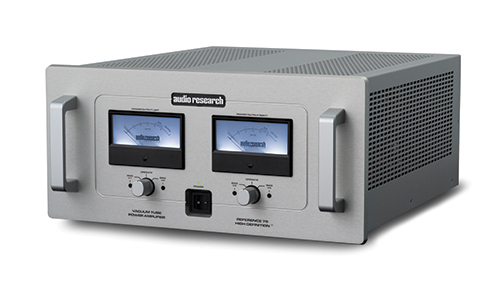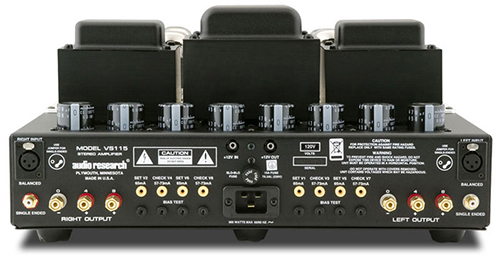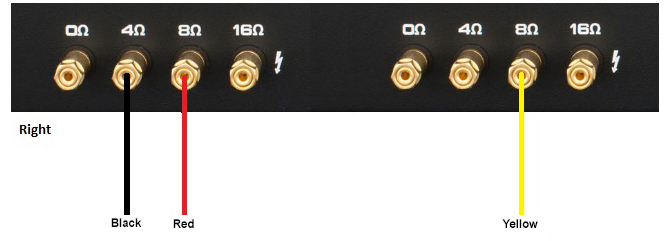Blog
Earth to A.R.C., Earth ground, that is.
The Peculiar Case of Audio Research’s High Level Connection
 As High Level REL Connection schemes go, perhaps none is less obvious than Audio Research’s way of connecting to Ground. The exact origins of ARC’s grounding method are lost in the mists of time, but it has something to do with assisting in achieving correct absolute phase[1] and goes all the way back to 1973.
As High Level REL Connection schemes go, perhaps none is less obvious than Audio Research’s way of connecting to Ground. The exact origins of ARC’s grounding method are lost in the mists of time, but it has something to do with assisting in achieving correct absolute phase[1] and goes all the way back to 1973.
Briefly, REL’s High Level Connection, that has three wires inside of a black poly jacket about the size of a microphone cable. Within this simple black jacket are a Red (R+), a Yellow (L+) and a Black (Ground).
It’s this last item which can get interesting as there are so many different ways of addressing ground among amplifier designers. It often seems to us as if amp designers have simply gotten bored with the concept of ground, the notion of a simple return path for the positive energy being generated in a circuit, simply returning to Mother Earth. Depending upon your power amplifier designer’s goals (balanced differential connects completely differently than common ground “normal” amps) and the class of amp–Class D “digital” amplifiers and receivers which use switch mode power supplies and don’t really have a true ground. It makes REL’s job more difficult. Which is why your erstwhile reporter is gainfully employed.
And then there is ARC—the Mac Daddy, original truly high end amplifier manufacturer of all. No amplifier company in the history of our industry is as legit as ARC given that, for many who joined the hunt at a certain age, they were formative in the development of the entire concept of high end audio; audio going beyond mere entertainment. The High End sought the reproduction of music as it occurs in real space, played by lifelike musicians, and ARC along with a few other brave companies were in there helping us all define the possibilities.
 Why William Zane Johnson determined that 4 ohm + on the speaker taps on the rear of his Reference amps was to be the ground circuit is open to debate. But what is not up for discussion is that the 4 ohm HOT connection actually forms the ground circuit. Damnedest thing we’ve ever seen. First time I ever tried it I have to admit I called Trent Suggs, REL’s US National Sales Manager and former National Sales Manager for Audio Research for reassurance.
Why William Zane Johnson determined that 4 ohm + on the speaker taps on the rear of his Reference amps was to be the ground circuit is open to debate. But what is not up for discussion is that the 4 ohm HOT connection actually forms the ground circuit. Damnedest thing we’ve ever seen. First time I ever tried it I have to admit I called Trent Suggs, REL’s US National Sales Manager and former National Sales Manager for Audio Research for reassurance.
“Really? Just making sure, I connect the Black wire to 4 ohm + right? You sure Trent? Cuz if sparks come out of this very nice sounding $30,000 pair of mono blocks I’m going to be very unhappy.” “Yup” came back the confident reply—confidence on the other end of the line being just the ticket when one is getting ready, metaphorically speaking, to jump out of an audiophile airplane without a parachute. So, I did, and it didn’t (spark, I mean) and the sound we brought out of a pair of Wilson Alexia 1’s backed by a pair of No.25’s was nothing short of magical.
So, here you go, connect using 4 ohm hot EXCEPT when using 610T or REF 750 monoblocks which sport this huge mother of a grounding bolt on the rear panel just begging for a Black Wire from your favorite pair of REL Reference subwoofers to be connected to said bolt. Or more likely 3 Black wires as we do seem to enjoy a preponderance of our Reference Line Arrays being paired with Audio Research Reference monoblock amps. Here’s a link to the wiring diagram. Don’t hesitate to give us a call or send us an email with photos if you need additional support.
[1] Absolute Phase refers to both hot and ground being switched on both channels—usually at the amplifier speaker terminals. In doing so, it changes the impulse behavior of your entire system. Easiest way to think of it is, when a bass transient–say a kick drum–occurs on the recording, your speaker’s woofers should both pulse outward toward the listener. If instead they suck inward the resulting sound will be weak and anemic sounding.












